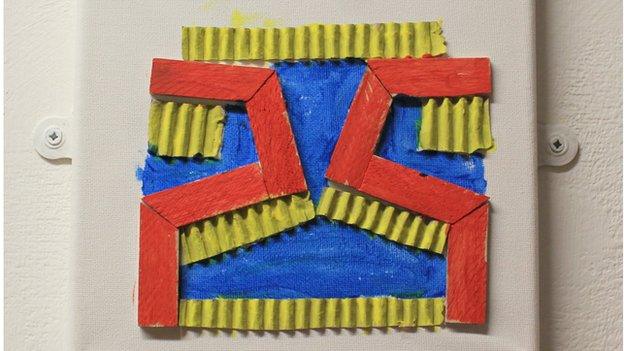Art may reveal early signs of dementia
- Published
At her art therapy class in Leeds, Joyce Cope is carefully painting a tree.
Despite living with dementia, her brushstrokes are measured and steady, the legacy of her years of painting as a talented amateur.
Her work today is very different to the highly detailed pieces she used to produce - expert reproductions of Old Masters such as "Girl With the Peal Earring" by the 17th century Dutch artist Johannes Vermeer.
Joyce's daughter, Hazel, says her mum still enjoys painting, but before the disease took hold her work was really striking.
"They were really good copies of the Old Masters and very detailed.
"She's not as detailed now.
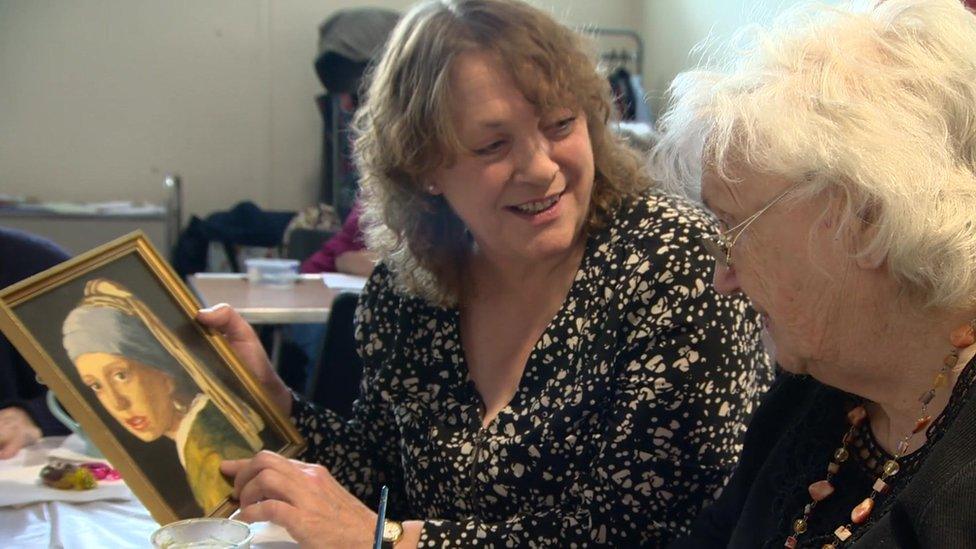
Joyce and her daughter Hazel
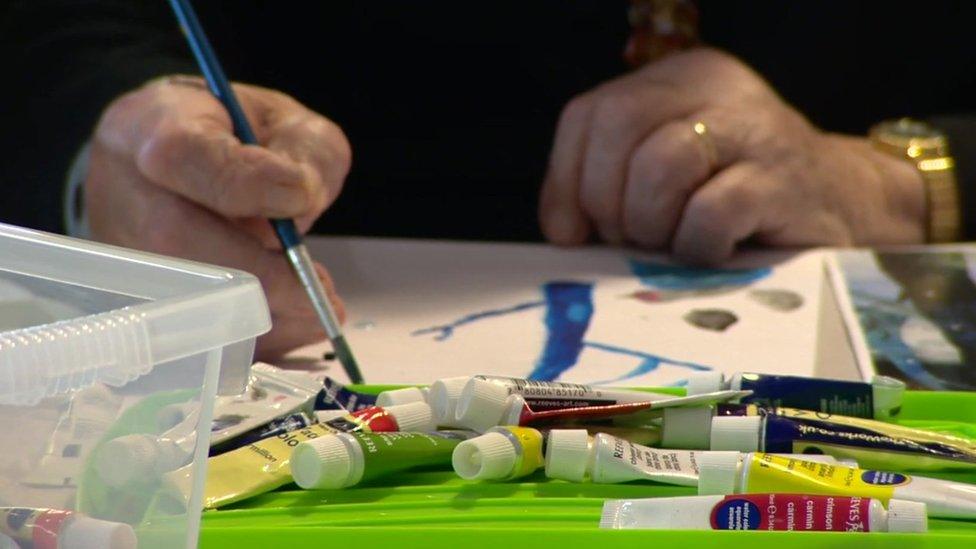
"She can remember things from years ago, but generally if you asked her what she had for breakfast this morning she can't remember."
But can art - more specifically, the way artists work - tell us something about the development of dementia and other degenerative brain diseases?
A minute analysis of the brushstrokes used by artists who developed neurological diseases reveals intriguing clues about changes in the brain that occurred years before any symptoms became obvious.
The mathematical method is called "fractal analysis", which is a way of looking at recurring patterns that occur both in maths and in nature.
Trees and clouds are said to be "fractal", as are the recurring patterns of our brainwaves and heartbeats.
The same applies to the individual brushstrokes of artists, which can be compared to their individual handwriting.
Psychologist Alex Forsythe from Liverpool University carried out a fractal analysis of more than two thousand works by seven famous artists and found tiny changes in those patterns.

"In artists who went on to develop dementia or Parkinson's disease, the fractal patterns started to change in an unusual way.
"So what we found was that up to 20 years before they actually had a diagnosis of a neurological disorder, the fractal content in the paintings had started to decrease.
"So anything that helps us understand more about the way in which the brain operates is a useful way to inform future directions for research."
The artist Willem de Kooning was diagnosed with Alzheimer's disease after his death in 1997.
The brushstroke patterns seen in his earlier work were different when compared to later paintings.
But in artists like Monet and Picasso, who died free of any known neurological disease, the patterns remained constant throughout their lives.
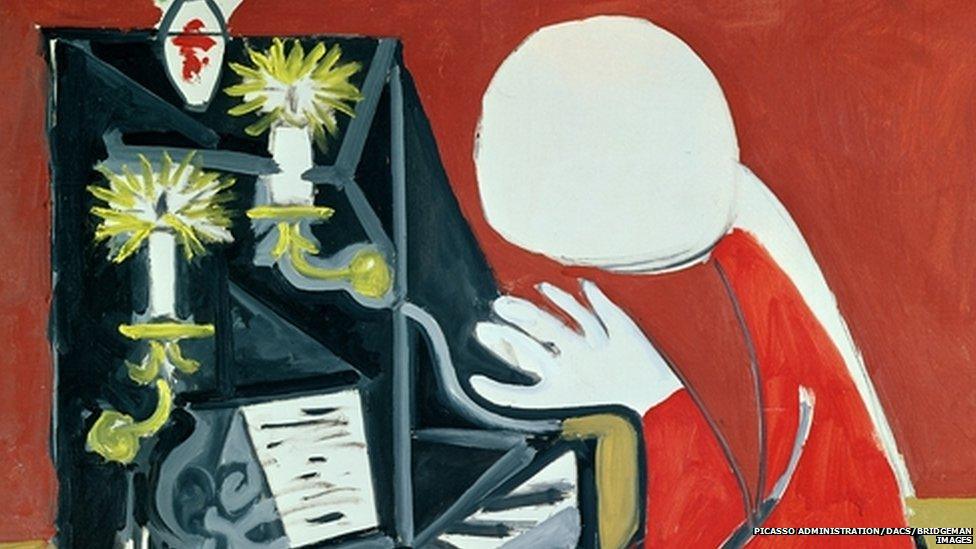
The Pianist painting by Picasso
It's striking that the even though Picasso in particular changed styles so often throughout his career, his fractal range was constant, regardless of the style in which he painted.
This research won't help diagnose dementia or similar diseases.
But it does give a valuable insight into changes that are taking place in the brain years before the illness appears and so could help provide some answers to the hidden processes behind these devastating conditions.
- Published8 September 2016
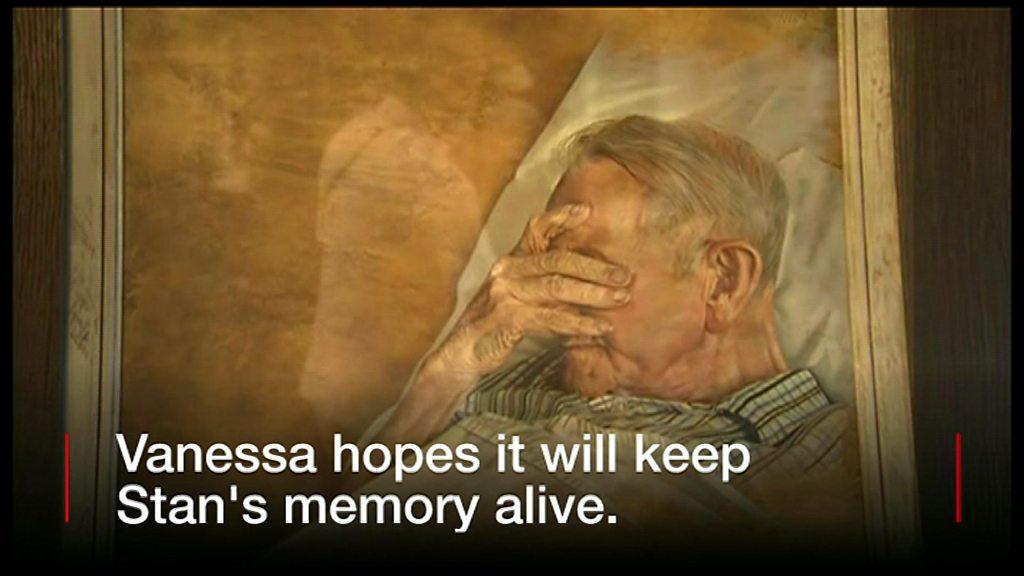
- Published26 August 2015
